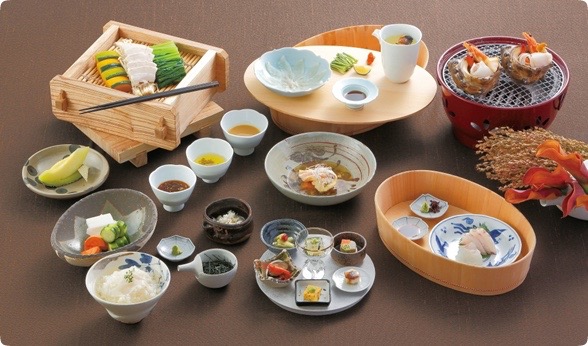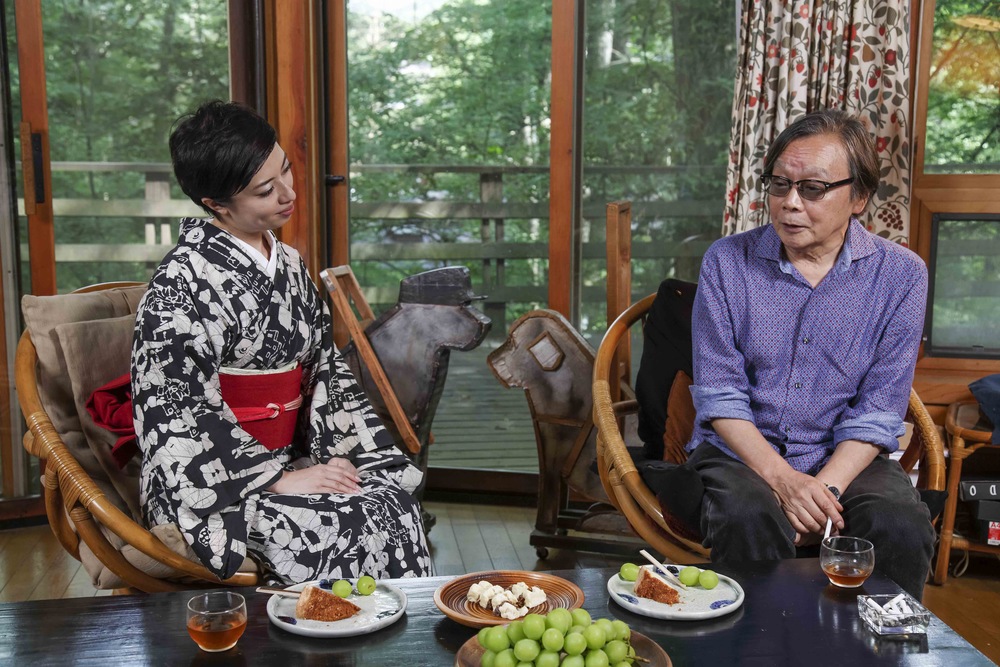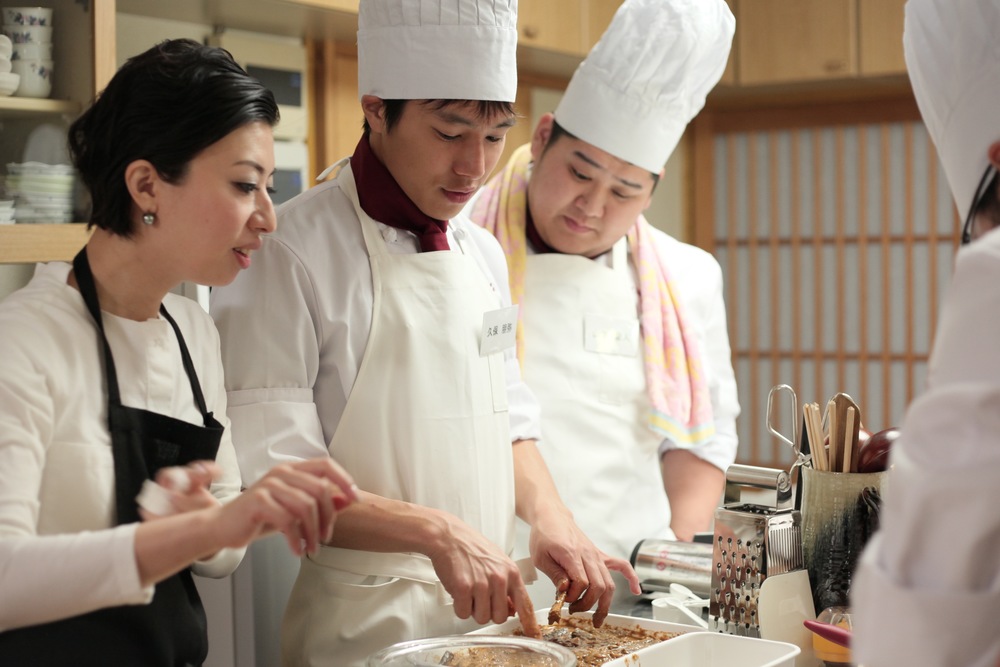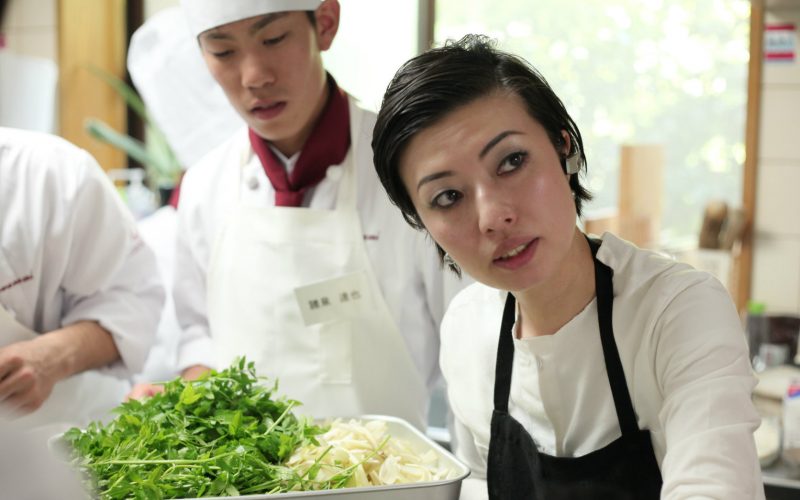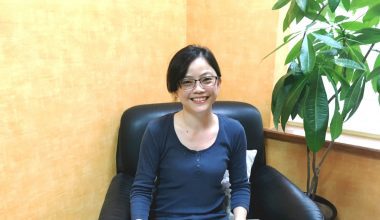哈囉 各位 CAREhER 的會員大家好,我是主持人Tiffany,轉眼已經是 2016 年的第二個星期了,也希望大家除了美好的跨年假期,許下展望,充足了電,可以展開全新的 2016 年。
今天的來賓是從日本九州福岡來的大塚瞳 Hitomi Otsuka。她長期來往在東京、巴黎,以及其他的美食之都,她這次來到台北則是替一位難求的餐廳 R.A.W. 設計一週年餐會的紀念品,這樣大家有沒有猜出來她的職業是什麼了?
Hitomi 的工作是食物空間設計師,或是也可以說是料理專家。她大學時期主修的是法文,現在的工作內容包括替餐廳、飯店設計菜單,籌辦私人婚禮派對,寫專欄。而她最喜歡的事幫助日本各類器皿藝術家,例如鍋物創作家等等,與國際間進行交流和策展,這樣聽是不是還是有一點抽象?沒關係,那麼我們就請 Hitomi 親自來和我們聊聊她的工作。
讓我們歡迎 Hitomi!
1. 可以和我們先聊聊你的工作嗎?因為我試著向讀者介紹妳正在做的事情,但真的太難用一個名詞概括妳做的這些有趣的事情。
我是一位料理專家,專門做餐宴活動,有時我只是為飯店或餐廳設計一份菜單,甚至有時候我也負責某些活動的外匯。同時我也在日本雜誌寫專欄,特別是介紹新開幕的餐廳。
我記得你也策劃了許多展覽。
是的,是有關陶器的展覽。
所以妳基本上可以算是連接日本與日本以外的地區囉?
對,有時候會介紹日本以外地區的作品和新銳的陶藝家。
真的非常有意思,妳不僅做特別的展覽,也會自己做料理。
2. 什麼原因讓妳開始從事料理相關的工作?從以前就一直對料理和食物感興趣嗎?
是阿,在我小的時候,我的祖母和母親經常邀請客人來家裡辦派對,所以我可以說是在派對中長大的。但是現今在日本已經很少見到找朋友來家裡辦派對的人了,一方面住家空間越來越小,一方面是因為日本人很害羞。她們不擅長舉辦休閒的派對。
正因為我在這樣的家庭環境下長大,我相當熱衷自己來做這些派對的玩意兒。所以在我大學獨自外宿之後,和我的母親一樣經常在家裡舉辦的派對,因為我不想要一個人在家吃飯。
3. 妳如何獲取策劃展覽的想法?一定要有這方面的基本知識才知道要如何統合各種點子吧?
我的經驗多半來自於我的母親,以及平時參加的派對,而這些經驗對啟發我想法上非常有幫助。除此之外,我還上了一些桌上擺盤的課程,同時我也在日本的餐飲學校就讀超過十五年,當然有學日本料理,還有中國、印度、泰國、義大利和法國的料理。除了甜點!因為甜點又是另外一個世界了!
我上了許多有關食物、空間設計等等的課程,然後在 20 歲的時候開始了自己的事業。
4. 哇,在那麼年輕的時候!所以妳是如何開始第一份案子的呢?
我第一次接到的展覽是來自教我桌上擺盤的老師,他要我自己想一個題目並展示出來,當時的題目是「雙人晚餐」。我的想法是即使餐桌上只有一個朋友也可以辦派對,所以我創造了非常簡單卻很棒的兩人用餐空間。人們總是認為餐桌應該要擺滿食物,圍著一大群人,但是我反而將這個的環境帶到了兩個人的情境。
這想法很適合空間小又只有兩人的現代家庭呢!
在這個產業中,越多人追蹤的專欄作家,知名度也會隨之提升,這樣聽來,妳可以說是這之中的自由工作者,同時妳也像是一名策展人,要和花商、陶藝家、餐廳主廚等等這些人合作。
5. 妳又是如何與他們建立關係?如何從中挑選足以發展為客戶的新銳藝術家?因為自由工作者似乎沒有這麼多的資源與人脈,對嗎?
是的,我通常會出去看看新的展覽、四處走走,並拜訪一些經營個人事業的朋友們。舉個例子來說,我很喜歡花店,但花店分門別類、各式各樣,但是我不會只挑自己喜歡的,我喜歡到處去嘗試不同的可能。當然我還是會從個人喜好開始做起,但我的工作更需要我勇於嘗試各式風格來合作。所以我會到各家餐廳用餐,尤其是新開的餐廳,好持續更新我的口袋名單。
都是你自己支付這些費用嗎?
對,而且我通常會在一些新的店剛開幕時就登門拜訪,我也經常去許多畫廊、藝廊。
6. 所以當妳到了那裡,認為這間店值得合作,妳通常如何進行下一步?妳會給他們名片嗎?
舉例來說,當我要去一些藝廊前,會事先確認藝術家當天是否也在場,如此我就有機會可以當面認識他。我向他們介紹我的工作,如果我喜歡這位藝術家的作品,就會開始思考如何與他們合作,並且為他們設計新穎的策展活動。舉例來說,陶藝品在藝廊上通常是擺放在那裡販賣,但是現在更看重的是如何向大眾展示陶藝品在平日的使用。當然我們拿這些碗盤來吃飯,但展示時更需要有食物盛放在上面。
這麼說來妳等於是幫這些藝術家行銷,讓不是藝術家的消費者更清楚知道這些陶器在在家中要如何運用。有了食物陪襯,他們更可以想像在家中使用的畫面,這真是太有趣了!
是的,加上大部分陶藝家是不會做菜的,很難以置信吧,但他們的創造是為了藝術。
但如果陶藝家都不會料理了,他們又怎麼知道如何使用這些陶器?
一般來說這些陶藝家們無法販賣太多日常使用的盤子,他們多半販賣的是一些藝術品。特別是餐盤,尺寸過大或過小的餐盤都不適合日常使用,所以有時我會建議他們創造實用的大小,而這些實質的意見及做法對於雙方合作來說是非常有利的。
我們談了很多關於陶器、陶藝品,這是妳在福岡的專業之一,而福岡也以各式陶藝風格的學校聞名。妳在認識新的藝術家後,馬上著手思考如何為他們做新風格的嘗試。
7. 那麼妳又是如何保有源源不絕的靈感和想法?因為隨時要有新點子是非常不容易的。
其實我無法在看到陶器這類產品時,馬上想到新點子。但是我經常看電影,因為每部電影幾乎都有用餐的場景,透過這些人們不是正在吃東西就是正前往用餐的電影畫面,從中體驗到不同人與食物的關聯。所以不僅僅是關注在食物上,多去品嚐新的餐廳、看電影,或是參觀博物館等等都受益良多,加速我在工作上的靈感乍現。
妳真像位食物、展覽的說書人,為它們添上一筆有趣的故事。
最近妳也來到台北,和知名餐廳 R.A.W. 合作。
8. 因為 R.A.W 是相當講究台灣味的一間餐廳,妳又是如何觀察,並挖掘代表台灣的味道?妳幫他們設計的紀念禮物 – 米鍋,妳可以告訴我們更多關於這場策劃活動嗎?以及妳如何接手這個專案?
我上次來台北的時候和一位朋友見面,他在台北經營自己的餐廳。而當我回到九州以後,他問我是否可以設計一個陶藝的原創作品。
在這裡提及一下我做料理的習慣好了,一般我都是使用砂鍋(日文原文:土鍋),我習慣使用陶製品料理,我不太使用電子鍋等等。在我的家鄉福岡,那裏有非常多的陶器。特別的是,明年將會是九州發現第一件陶器的第四百年。據說在四百年前,有一位韓國的陶藝家來到日本有田(位於日本九州的佐賀縣),教導日本人製作陶器。
而 R.A.W. 的江振誠主廚才剛剛在有田完成一個相關的活動,這就是我此次選擇那個地區的陶器的原因,而砂鍋的形狀和風格是我專門為了R.A.W. 所設計的,它是個十分復古的風格。
儘管我們的讀者或許沒有到 R.A.W. 用餐,我們仍有機會看到一些妳專門設計的陶器照片。
剛剛我們談論了很多關於妳的工作,妳與不同的人合作,並籌劃一次又一次的展覽,這真是一份非常特別的工作,我相信我們的讀者也很有興趣。
9. 妳可以為想從事這個產業的朋友或是想當自由工作者的讀者,一個最後的建議嗎?妳建議他們如何開始著手?
走出去!到外頭品嘗!不要畫地自限地去嘗試!
首先,妳可以先從喜歡的店開始,但是日後不要侷限自己,盡量到各種不同型態的店,然後想想看自己可以為他們做點什麼,思考如何與他們合作。鼓起勇氣和他們談談,像是你會料理、製作產品或是為他們找到藝術家來創作。因為在餐廳工作的人沒有這麼多機會去發現和接觸新的藝術家,所以如果妳有空出去看看,為他們搜尋資料,就可以讓他們驚訝於妳為他們搭建起的橋樑。
非常感謝 Hitomi 今天的分享告訴我們建立成為一位專業的食物空間師,如何建立自己的人脈以及持續保持靈感。
我們非常謝謝 Hitomi 今天來,很多讀者可能會對於像這樣子看似非常有趣的 freelancer 的工作,尤其是食物空間師、食物擺設這樣子的職位有很多的興趣。我們從 Hitomi 的故事可以知道這是需要長年的累積。還沒有累積的朋友可以從現在開始如她所說:多出去涉獵!多多想想自己可以提供給這些合作的人哪一些價值,怎麼串聯不同的資源去完成一個又一個的專案,來累積自己的履歷。
英文逐字稿
Let’s welcome Hitomi! Welcome to Taipei!
1. Can you tell us about your job first?
Because I’ve tried to introduce to our audience about what you do, but it’s so hard to put a label over all these fun things you do, because you basically eat and travel.
I am a cooking expert. I make a lot of food space events. Sometimes I just create a menu for hotels or even restaurants, and I cater when I’m invited and I cook. Then I write columns for magazines in Japan, especially introducing a new restaurant.
Also, I remember you do a lot of curator exhibitions.
Yes, for pottery.
So you basically bridging between Japan and outside of Japan?
Outside of Japan sometimes and to introduce a new artist of pottery works.
Okay. Very interesting.
So you not just focus on the special displays, but also you have to cook by yourself.
2. What made you to start to work in this area? Have you always been interested in cooking and food?
Yeah, my grandmother and my mother was always inviting people and having a home party when I was very young. So I grew up as a party people. But it is a very rare case now in Japan to invite people in your home party since their home are so small and they are very shy. They are not good at doing a casual party.
So I grew up in that kind of family, and I was very interested in doing it by myself. So I started to live by myself when I was a college student. I started to do what my mother was doing at my home because I didn’t want to eat alone at my house.
3. How do you have those ideas how to do all the exhibitions? has to have a certain knowledge to how to coordinate that.
I have experienced a lot from my mother and I went to a lot of parties. So those experiences really help.
I went to couples of classes of table dressing and even produced a little bit, and also I went to a cooking school for more than 15 years. in Japanese cooking, of course, but Chinese or Indian or Thai, Italian, French. All except sweets.
I took many classes for food, space design for learning more traditional event. And then started to do my own business when I was 20 years old.
4. Oh that’s very young! So how did you start your first project?
The first exhibition I joined was my teacher from the table coordinate class, who asked me to display for my own title. The title at that time was ‘Dining Between Two’.
I think we can have a party if you have one friend at your dining table, so I displayed something some food space with two people that was really simple but really nice. People always think the food would be a lot of people with a big table, but I just brought it to two.
That actually suits modern family now because usually it’s two people with the smaller space.
So it sounds like because you are a freelancers,which is where in this industry, most columnists they follow, they have a big magazine name after them. So you’re a freelancer. Also, can you tell us because you sound like a coordinator. You have to coordinate with either a florist, a pottery artist, restaurant chef and all that.
5. So how do you build all these impressive connections? How do you know all these young artists or clients? Because freelancers usually don’t have that many resources, right?
Yeah, I just go out to a new exhibition, or walk around town, and meet friends whose owning their own company. I mean like flower shops, but many different types of flower shops, so I don’t choose whatever I like. Of course I start where I like, but for this coordinating, I need many types and varieties. So I eat all kinds of restaurants especially new one for updating my detas.
On your own cost?
Yeah sure. and when the new shops open and I go, and I have a lot of galleries I keep going.
6. So when you go, when you actually think these people are worth working with, how do you approach your next step? Do you just give them your business card?
For example, when I go to the gallery, I checked the day when does the artist is in the gallery, so that I can meet the artist and then I go. Then of course I talked to them what I’m doing. If I liked that artist’s art, I always think of how I can collaborate and make a new style of events. For example, talking about pottery, just put on a gallery and sell them. Nowadays, it’s more important to show and teach them how it can be used in your own life. So talking about place or dishes, of course you use for eating, so it needs food to be on a plate.
So you actually help them market because you let people who are not artist, the buyers and customers have a clear idea how they could use it at home. With their food, they can visualize what it looks like at home. That’s very interesting!
Also most of the potteries can’t cook. I couldn’t imagine but they just make their options for art.
But how do they know to use that with if they don’t know how to cook?
So they can’t sell that much for the daily use plates. They can sell options because of the art. Especially dishes. For example, the size is too big or too small to use for selling dishes. So I sometimes advise to make a suitable size. That kind of collaboration really works and helpful.
It sounds like you have some business advice, marketing advice to artists.
Do you make pottery by yourself?
No. As a hobby I did.
We’ve talked about pottery because it’s one of your expertise in Fukuoka (福岡). It’s known to have a lot of different pottery styles at schools. We look through some of your recent projects and all that. Like you said, when you meet some new artists, you immediately think of how you can help them with the new style.
7. So how do you continuously get inspired and have new ideas? Because it’s always difficult to have new ideas.
I can’t imagine immediately when I see the product, so it’s hard to tell about that.
But I’m continuing to see movies since every film has a food scene.
People eat or people go to get some food. Some scene in the movies I saw before was for food, so I can experience (imagine) somebody’s life with food. Not just focus on food is really helpful. I mean go out to eat in a new restaurant or see films and go to museums. So that kind of things helps why immediately I can picture.
You’re like a storyteller through food and display. You help them tell stories.
So recently you went to like you’re here in Taipei now is to do a collaboration with one of the most famous restaurants in Taipei R.A.W.
8. What was the idea of it? And what was your observation? Because R.A.W. talks about the flavor of Taiwan, what represents Taiwan. You help them make the anniversary gift- the rice cook.
Can you tell us more about this collaboration? And how did you start this project?
I had met a friend from Taipei last visiting Taipei. Actually he has his own restaurant in Taipei and after I went back to Kyushu(九州)Japan, he asked me if I can make an original product of potteries.
Talking about myself cooking, I always use Donabe (土鍋). I mean pottery pan to cook. I don’t use that much electricity in pans. And my hometown is in Fukuoka (福岡), part of Kyushu Island (九州). We have a lot of potteries there. Especially next year is going to be 400 anniversary year when first pottery was found in Kyushu (九州). One of the Korean potters came to Japan 400 years ago to teach how to make pottery in Arita (有田). Chef Andrie from R.A.W. just did a big project in very good event in Arita (有田) and that’s why I chose a pottery from that area this time. The shape and style of the Donabe (土鍋) is actually designed by me for R.A.W. The design from the first very old-fashioned style of shape.
So for our members that aren’t at the dinner of R.A.W., we can see a picture of your design of the pottery.
So we talked so much about we now know what your work is like. You coordinate between different people, different occupation, and you organize projects by projects. You tell stories by arranging dinner and you kind of help artists to market and all that. So this is a very very specific type of job. I’m sure a lot of people wanted to know.
9. Can you give them a last advice for people who want to be a freelancer but in industries or doing similar jobs like you are right now. How do they start and what are the advice you would give them?
Go out! Eat out!
First you can go to a shop you really like, but try to go as much as you can to a different types. Then find out what you can do with them. Then talk about what you can. Like if you can cook or you can make products or you know and find out a new artist that helps. Because people working in one restaurant doesn’t have so many chances to explore or research a new artist. So if you have time going out to see what’s going on, you can do the research for them. Get them hit what you can do to bridge them.
So we want to thank Hitomi for coming today and telling us about how to really build up your list as a coordinator. How to build a connections and how to continuously keep yourself inspired.
看更多 Hitomi 的工作花絮
2.jpeg)
